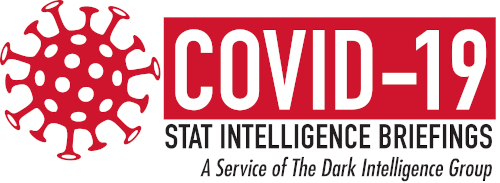Even in regions such as Idaho’s Treasure Valley, where there are relatively few COVID-19 cases, labs are coping with declining volumes of lab tests and reduced revenue.
A significant decrease in their testing volumes, along with a substantial loss of revenue, is just one unanticipated effect that the COVID-19 pandemic has created for many clinical laboratories. While hospitals and clinical sites in epicenters such as New York City report being stretched beyond their normal capacities, many labs in other regions of the country report experiencing significantly lower volumes of testing than normal. This sudden decrease in revenue that accompanies these lower volumes is causing cash flow problems for many labs throughout the United States.
Understanding changes other clinical laboratories and anatomic pathology groups are experiencing in testing volumes can help lab administrators to understand if what is occurring in their markets is consistent with the rest of the country. To explore a typical market that is not in a COVID-19 epicenter, we visited the response of a laboratory in the population center of a rural area.
Treasure Valley Idaho is the main population center in Idaho. It includes Boise and is a growing area with a 17% population increase over the last decade. There are nine hospitals in the Treasure Valley area serving the 709,000 people. As of April 13th, Idaho has seen just over 1,400 people with COVID-19 and 27 deaths. Idaho was projected to reach peak resource use on April 18.

We interviewed Vicki Sukeena (left), the laboratory administrator at 150-bed West Valley Medical Center (WVMC) in Caldwell, ID, to learn how local laboratories have been affected by the COVID-19 pandemic and how they have responded.
According to Sukeena, the WVMC laboratory has seen a steady decrease in testing volumes, with about a 60-65% reduction. These decreases in volumes are like other labs in the valley, and volumes slowly continue to decrease. The primary drivers for these reduced volumes seem to be decreasing in outpatient testing and emergency room visits.
The fewer patient visits and the resulting decline in lab test volumes have changed the lab’s approach to staffing. This involves “decreasing people’s hours, finding where we can cover shifts. We’re, I guess, being a little creative with our schedule,” Sukeena said. While WVMC can offer pandemic pay for lab staff who do not work their normal hours, Sukeena says that they would not be able to keep all their staff without this program.
The WVMC lab prepared for the COVID-19 crisis primarily by securing their supplies and monitoring their personal protective equipment (PPE) usage. The lab does not currently do in-house PCR or serology testing. While Sukeena says that their lab is in line to receive PCR testing abilities, she indicates that most of these capabilities are being routed towards epicenters, and that it is not clear how soon these testing options will be available for their in-house lab.
Clinical labs in markets such as Idaho are seeing test volumes that continue to decrease with lower numbers of elective outpatient and emergency room visits. Decreased testing volumes will continue to reduce the number of man-hours needed by clinical labs and may require labs to reduce costs in the upcoming weeks.
Labs not located in epicenters may not receive the support in developing testing capabilities as resources are diverted to areas with higher demand. This may require labs to focus on streamlining their existing processes and communicating with their state’s public health laboratories and reference labs to facilitate faster testing turnaround and reporting times.
One key issue every lab administrator and pathology director needs to address—even in the midst of this SARS-CoV-2 pandemic—is how to restore adequate cash flow to their lab as this outbreak ends. For example, labs should consider that as local restrictions are relaxed, patients who have not had access to elective services for several weeks may lead to a surge in testing volumes. Similarly, patients with chronic conditions that put off regular visits to their doctors during the pandemic will want to catch up with missed care and testing. Planning ahead for the manpower and equipment to accommodate the increased lab test volumes should be an important consideration.

By Caleb Williams, Editor, COVID-19 STAT






